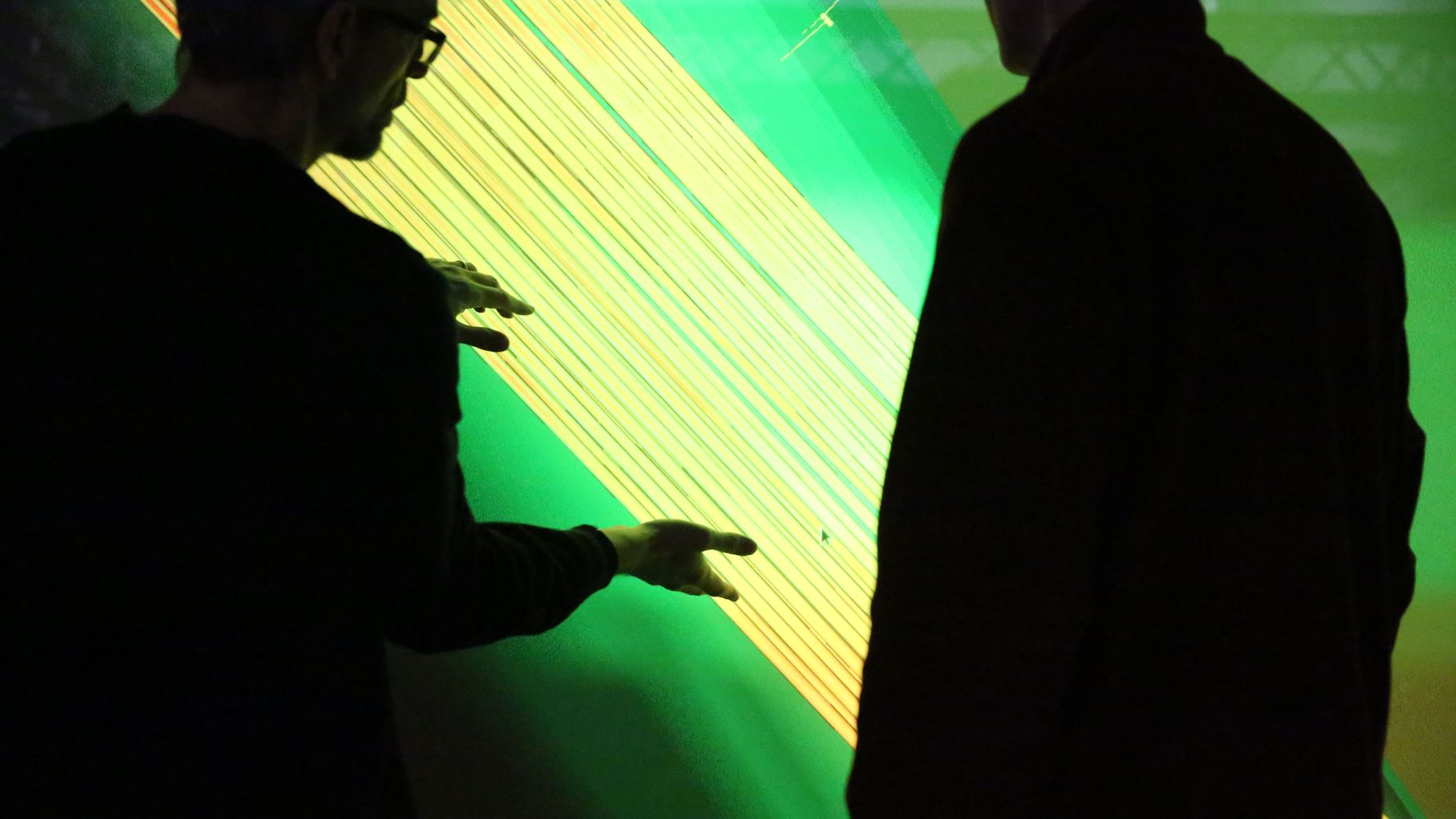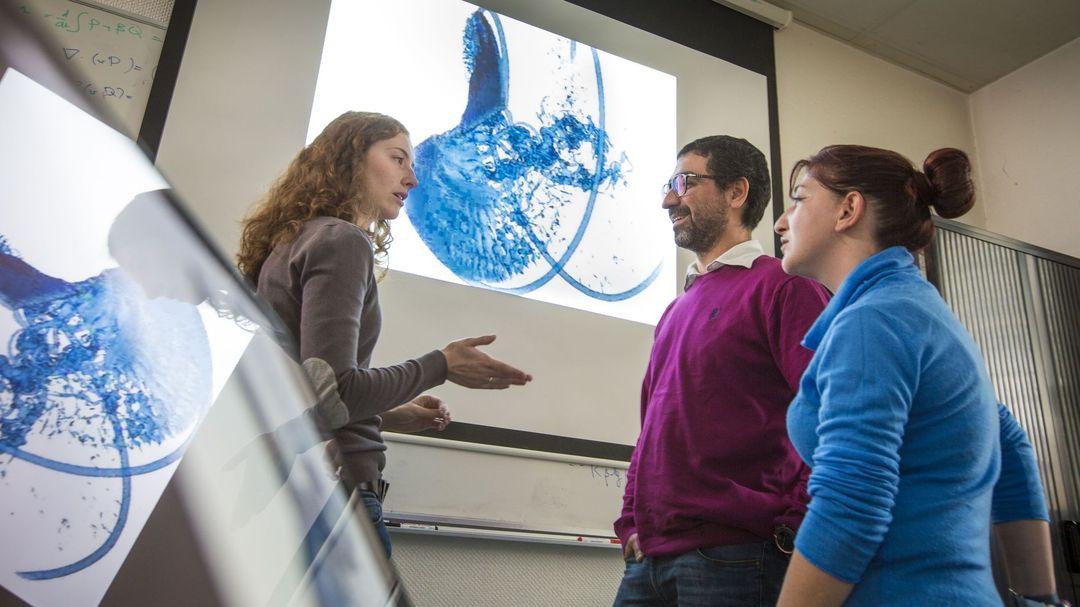How digital science can play its part in protecting the environment
Date:
Changed on 10/05/2022

Modelling climate change has been an important subject area for Inria right from the start. But according to Jacques Sainte Marie, who set up the team ANGE (analyse numérique, géophysique et environnement - digital, geophysical and environmental analysis) in 2021, “Although environmental concerns were there, the focus was more on modelling, understanding and simulating geophysical flows and natural disasters than on rising levels of CO2 in the atmosphere.” Aimed at reducing greenhouse gas emissions, the production of renewable energy (wind, solar, tidal stream, wave, etc.) and improvements made to energy systems (in terms of production, distribution, storage, etc.) provoked a flurry of activity in both optimisation and statistical modelling.
In the early 2000s there was a growing awareness that the manufacturing of digital devices and the resulting energy consumption had a significant impact on the environment.
When it comes to climate change, digital science is both part of the problem and part of the solution. With the advent of networks, data centres and connected objects, the onus is on us to promote digital frugality and sustainably designed digital devices through research and innovation. Digital has had such a big impact, whether from an organisational perspective (e.g. virtualisation, teleworking), in medicine, in agroecology (e.g. reducing inputs) or for the development of participatory tools.
This shift in thinking didn’t just take place at a societal or a scientific level, but also at an institutional level. Led by Céline Serrano (direction of innovation) and Peter Sturm (team-projet STEEP), a working group was set up, tasked with devising concrete initiatives aimed at helping national boards and all Inria personnel to fully grasp the environmental challenges at stake. The group MakeSEnS published its report towards the end of the first half of 2019.
In the immediate aftermath, the institute’s senior management team set up a task force responsible for implementing a Social and Environmental Responsibility policy, headed up by Céline Serrano. Inria also created another new position, Deputy Scientific Director in Charge of Questions Relating to Earth Science, the Environment and Energy, a post which Jacques Sainte Marie has occupied since September 2019. Their role:
ensure that our colleagues, who are aware of the environmental concerns, start taking action.
They do this by providing information, coming up with initiatives as opposed to introducing constraints and thereby encouraging staff to change how they do things. This includes renewals of IT equipment and both domestic and international travel, which is a major source of carbon emissions for researchers. But best practice isn’t just about words: an environment plan, with binding objectives, has been accepted by the institute’s advisory board.
In addition to the measures taken to reduce the carbon footprint of our working methods, the aim is to develop new areas of research which are directly linked to environmental protection and reducing the environmental impact of digital technology, and giving personnel who wish to do so the opportunity to align their work and their research with these themes. Making it easier for existing staff to transition towards these important subjects - whether individually or through the creation of dedicated teams, partnerships, or incentivising initiatives linked to these environmental subjects - allows scientists to combine their research with their own personal convictions.
The means they have available include “challenges” or exploratory actions, partnerships with other public bodies such as the ADEME (the French Environment and Energy Management Agency) or the INRAE (the French National Institute for Research into Agriculture, Food and the Environment), or private players from the digital ecosystem like ATOS or OVH. The aim is to devise digitally frugal solutions to problems faced by partners and to promote the transfer of research into the field. But the spin-off concept doesn’t stop there. The institute has introduced a range of initiatives (MOOCs, partnerships with public bodies such as La Poste) targeted at the wider public, pupils and teachers at secondary schools and companies.
Raising awareness of both the negative and positive impact digital can have also requires communication and education. This will involve closer collaboration with researchers in the human sciences in order to tackle the societal issues raised by the growing influence digital technology has on our lives, something which has taken on particular resonance as a result of the pandemic.
With this more pressing than ever, digital is no exception to growing environmental concerns. Although the waste it generates is no longer a secret, it is important to properly explain the complex nature of the impact the sector has.

Looking at the world through the prism of digital means translating everything into data that can be analysed and used. And so, whether it is currents, biodiversity or the behaviour of livestock, artificial intelligence and data analysis can be used to model our environment in order to develop a better understanding of it, to predict changes and, eventually, to better protect it.

Whether it’s developing technology for collecting and analysing data using only the energy available in the environment or improving the performance of simulations used to develop new energies, scientists at Inria have encountered a whole host of stimulating scientific problems. Let’s take a look at the innovations that are constantly pushing the boundaries of technology and providing solutions to environmental challenges.
Continue reading through a selection of articles on our scientific culture site: interstices.info